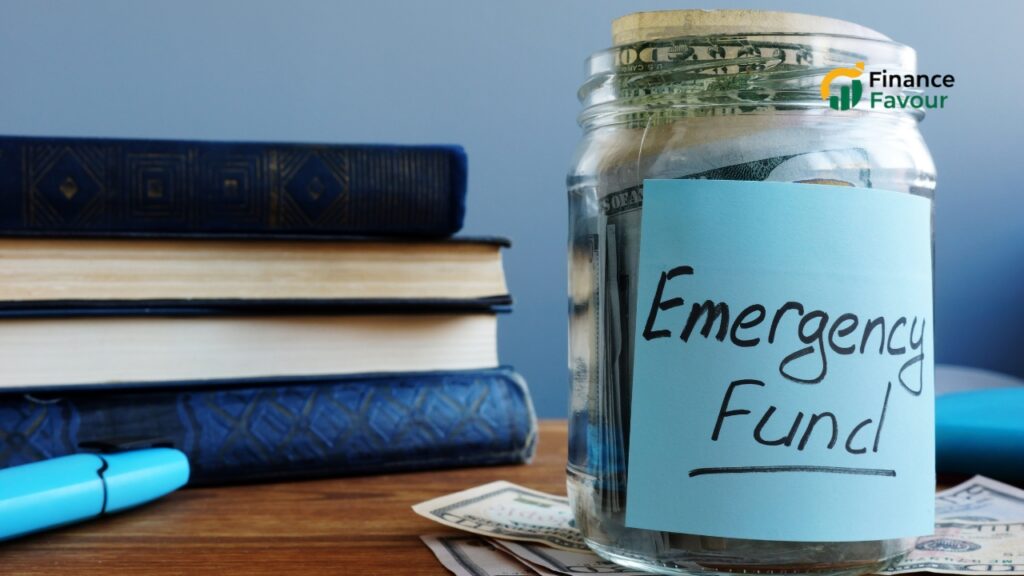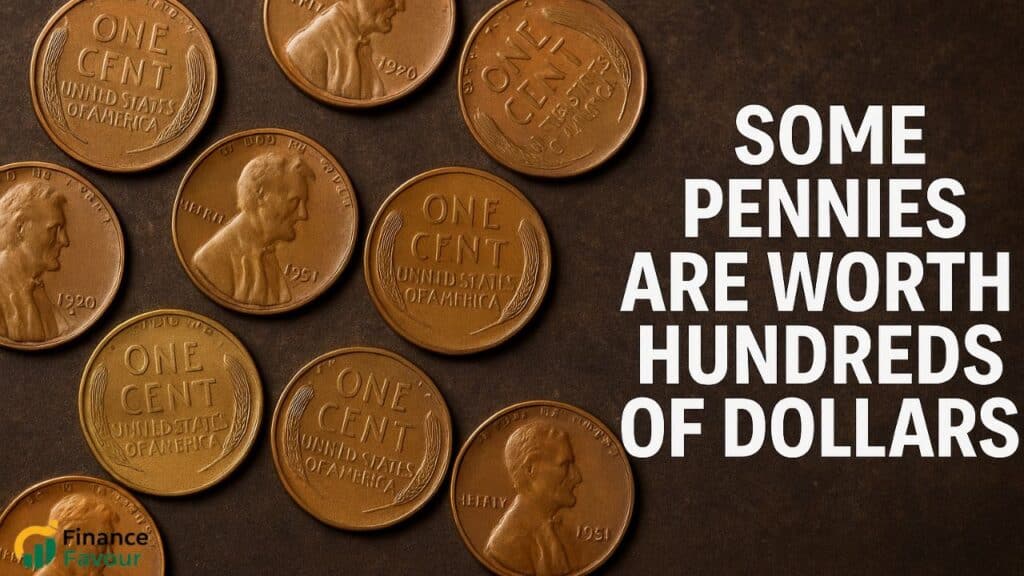Unexpected life events can derail your finances faster than you think medical bills, job loss, or even a major car repair can hit like a financial gut punch. That’s where an emergency fund steps in, acting as your monetary safety net. But if the idea of building one feels overwhelming, don’t worry you’re not alone. We’re going to walk you through five actionable, easy-to-follow tips that will help you start your emergency fund the smart way. You don’t need a windfall or lottery win to make this happen. All you need is a plan and a little consistency.
Why an Emergency Fund is Crucial
Creating an emergency fund isn’t just about hoarding money it’s about giving yourself the ability to breathe easier when life throws a curveball. Think of it as your financial first aid kit: you might not use it every day, but when you need it, you’ll be glad it’s there.
Financial Peace of Mind
Let’s face it money stress is the worst kind of stress. Having a stash of cash set aside specifically for emergencies brings an unmatched peace of mind. You’re not constantly fretting over the “what-ifs.” Instead, you gain a quiet confidence that says, “I’ve got this.” It’s not about being paranoid; it’s about being prepared.
Financial peace doesn’t mean you’re rich. It means you’re ready. It’s sleeping better at night because your finances aren’t hanging by a thread. It’s knowing that if your car breaks down, you won’t have to max out a credit card or borrow from friends. That peace is priceless.
Buffer Against Unexpected Expenses
Emergencies aren’t just possible they’re inevitable. You might lose your job, need emergency surgery, or have to replace your HVAC system in the middle of summer. Without a buffer, these scenarios can wreak havoc on your finances. With an emergency fund, they become manageable annoyances rather than full-blown crises.
Having even a few hundred dollars in a separate account can keep you from spiraling. It keeps your credit cards from ballooning and your stress from skyrocketing. That’s the power of a buffer it keeps a bad day from becoming a bad year.
Avoiding Debt Spiral
Relying on credit cards or personal loans in times of emergency is like trying to put out a fire with gasoline. You might handle the issue today, but tomorrow you’re dealing with high-interest debt. That’s a trap many fall into. An emergency fund keeps you out of this vicious cycle by providing immediate, interest-free access to cash when you need it most.
Even small setbacks can have long-term consequences if they’re funded by debt. A $1,000 emergency on a credit card with a 20% APR can take years to pay off if you’re only making minimum payments. An emergency fund saves you from this trap and helps keep your future intact.
Tip 1: Start Small and Be Consistent
The biggest mistake people make when starting an emergency fund? Thinking they need thousands of dollars saved up overnight. That mindset kills momentum before it even begins. The truth? You can and should start small. The key is consistency, not size.
Begin With What You Can Afford
Maybe you can only put away $5 or $10 a week right now. That’s perfectly okay. Don’t let the size of your contributions discourage you. Focus on building a habit first. Saving is like going to the gym—it’s the consistency that builds results, not a one-time effort.
This mindset shift makes all the difference. You’re not trying to reach $10,000 overnight. You’re simply setting aside a manageable amount regularly. As your income grows or expenses shrink, you can always increase that amount.
Automate Your Savings
Automation is your secret weapon. Set up automatic transfers from your checking account to a dedicated savings account. That way, you don’t have to remember to save—it just happens. Think of it as paying yourself first. Before you touch your paycheck, your emergency fund gets its cut.
You can automate weekly, biweekly, or monthly whatever works best. The less manual this is, the more successful you’ll be. It removes the temptation to skip saving because you “need the cash this month.”
Use the 50/30/20 Rule
One smart way to budget for savings is the 50/30/20 rule. Allocate 50% of your income to needs (rent, food, bills), 30% to wants (dining out, hobbies), and 20% to savings and debt repayment. That 20% is your opportunity zone. Even if you can’t hit that percentage perfectly, just knowing the framework helps.
This rule helps prioritize your savings without completely killing your lifestyle. It’s realistic and flexible, which is exactly what you need when you’re starting out. Use this strategy to carve out your emergency fund contribution every month and stick to it.
Tip 2: Open a Dedicated Emergency Savings Account
Your emergency fund deserves its own space. Keeping it in your checking account or with other savings is asking for trouble. Out of sight, out of mind might be a cliché, but when it comes to your emergency fund, it’s a powerful tool.
Keep It Separate From Your Main Account
Mixing emergency savings with your day-to-day spending account is a recipe for accidental withdrawals. You might dip into it for non-emergencies without even realizing. A dedicated account builds a psychological barrier, making it easier to protect your savings.
This separation is crucial. You’ll know exactly how much you have in your emergency fund at any given moment. No mental math, no guesswork. And the temptation to “just use a little” is reduced significantly.
Choose a High-Yield Savings Account
Why not let your emergency fund work a little for you? Parking it in a high-yield savings account (HYSA) helps it grow passively. Sure, it’s not going to make you rich but it beats letting your money sit idle.
Look for online banks that offer higher interest rates and no monthly fees. Many HYSAs offer around 4% interest annually. That’s money you earn just for being prepared free money for doing the right thing.
Ensure Easy Access Without Temptation
Your emergency fund needs to be accessible but not too accessible. The ideal account is one you can access in 1-2 business days, but not one you see every time you log into your mobile banking app. This prevents rash decisions and impulse spending.
Some people go a step further and bank with a different institution for their emergency fund. This added layer of separation can be the difference between preserving your fund and spending it on a “not-so-emergency” sale at your favorite store.
Tip 3: Cut Non-Essential Expenses to Boost Savings
You might think you need a bigger paycheck to build an emergency fund, but more often than not, the money is already there you’re just spending it without realizing. Reducing non-essential expenses is like finding hidden treasure in your budget.
Audit Your Monthly Expenses
Start by tracking every dollar you spend for at least 30 days. Use a notebook, spreadsheet, or a budgeting app whatever works for you. Categorize your spending into essentials (rent, groceries, utilities) and non-essentials (subscriptions, takeout, shopping sprees).
You’ll likely be surprised by how much “leakage” you find. Do you really need five streaming services? Are you still paying for that gym membership you never use? Trimming the fat from your budget is step one in finding extra money to save.
Replace Costly Habits
Once you’ve identified wasteful spending, it’s time to find frugal alternatives. Brew your own coffee instead of hitting the café every morning. Pack lunch a few days a week. Cancel unused subscriptions and switch to cheaper entertainment options like free community events or library rentals.
Every dollar you redirect toward your emergency fund brings you closer to financial security. It’s not about living like a hermit it’s about being intentional. Even small sacrifices add up quickly when you make them consistently.
Embrace Frugality Without Misery
There’s a difference between being frugal and being miserable. The goal isn’t to deprive yourself of all fun, but to find joy in low-cost or no-cost alternatives. Host potlucks instead of dining out. Swap clothes with friends instead of buying new ones. Walk or bike more and drive less.
By reshaping your lifestyle around value-driven choices, you’ll find that cutting costs doesn’t mean cutting happiness. You’re not giving things up you’re gaining control over your money.
Tip 4: Set Realistic Goals for Your Fund
Having a clear goal makes saving feel purposeful. Without one, you’re just tossing money into a void. A well-defined emergency fund target gives you direction and helps measure progress.
Determine Your Ideal Emergency Fund Size
Experts typically recommend saving three to six months’ worth of essential living expenses. That might sound overwhelming at first, but remember—you’re not trying to do it all at once. Start by calculating what you actually need each month to survive: rent, groceries, utilities, insurance, transportation.
Multiply that by three or six, and you’ve got your target. For some, $3,000 might be enough. Others might aim for $10,000 or more. The right number depends on your lifestyle, income stability, and number of dependents.
Break It Into Achievable Milestones
If your target is $6,000, that can feel like a mountain. But what if your first goal is just $500? Then $1,000? Breaking it into smaller milestones keeps you motivated and makes the journey feel manageable.
Celebrate each mini-goal you reach. When you hit $500, reward yourself (cheaply). When you reach $1,000, take a moment to appreciate your discipline. These milestones reinforce your progress and keep the momentum alive.
Adjust Goals With Life Changes
Life doesn’t stay static, and neither should your emergency fund goals. Got a new job? Had a baby? Moved to a new city? These changes affect your financial needs, so revisit your emergency fund target regularly.
Your fund should evolve with you. If your expenses increase, so should your savings. If you move to a lower-cost area, you might scale back. Being flexible ensures your emergency fund always meets your current reality.
Tip 5: Treat It Like a Bill You Must Pay
If you treat your emergency fund like an afterthought, it’ll never grow. The trick? Treat it like a bill a non-negotiable, just like your rent or phone payment.
Make It a Monthly Non-Negotiable
Schedule your emergency fund contribution like clockwork. Put it on your calendar. Add it to your budget sheet. If you get paid on the 1st and 15th, make sure money hits your savings on those exact days, too.
This mindset shift is powerful. You’re not saving “if” there’s money left you’re saving before there’s money left. That mental reframe can be the difference between a growing emergency fund and an empty one.
Reprioritize Your Budget
Look at your current budget and ask yourself: What’s more important my Netflix subscription or peace of mind during a crisis? When you treat your emergency fund as a top priority, your budget naturally shifts to accommodate it.
That might mean eating out less, canceling a few luxuries, or skipping a vacation. But remember, you’re not losing you’re investing in security, freedom, and future stability.
Avoid the “I’ll Save Later” Trap
“I’ll save next month” is the most dangerous lie we tell ourselves. Emergencies don’t wait for the perfect time. If you delay saving, you risk being caught off guard when you can least afford it.
Start today. Even if it’s just $10, get the ball rolling. The act of starting is what builds momentum. Don’t aim for perfect aim for progress.
Common Mistakes to Avoid When Building an Emergency Fund
Saving money is tough, and it’s easy to slip up. But by spotting common pitfalls, you can dodge them and stay on track toward building a solid safety net.
Dipping Into It for Non-Emergencies
This is the number one emergency fund killer. You tell yourself, “It’s just one concert ticket,” or “This new phone is kind of an emergency.” Next thing you know, half your fund is gone. The key is to define what a real emergency is before you’re tempted.
Create a list: job loss, car breakdown, unexpected medical bill those are emergencies. A sale on electronics? Not so much. Train yourself to protect that money fiercely.
Relying on Credit Instead
Many people think their credit card is their emergency plan. But remember, credit isn’t a safety net it’s a loan with interest. Relying on plastic digs you into a hole you’ll be repaying long after the emergency is over.
Use credit only if your emergency fund is truly depleted and even then, have a plan to repay it fast. Your goal is to reduce dependence on debt, not build it up.
Setting Unrealistic Savings Goals
Shooting for $10,000 in three months when you’re living paycheck to paycheck is setting yourself up for frustration. Unrealistic goals lead to burnout and quitting. Instead, aim for something you can achieve, then scale up gradually.
Saving is a marathon, not a sprint. Stay consistent, give yourself grace, and focus on steady progress.
Tools and Apps to Help You Build an Emergency Fund
Let’s be honest sticking to financial goals is easier said than done. Fortunately, there’s no shortage of digital tools to help you stay accountable, track progress, and make saving almost effortless. These apps do more than just crunch numbers they build habits.
Budgeting Apps
Apps like Mint, YNAB (You Need A Budget), and PocketGuard help you understand where your money goes. They categorize your spending, highlight problem areas, and suggest ways to cut costs. With budgeting insights, you can identify extra cash to funnel into your emergency fund.
Mint connects to your bank accounts and shows you real-time updates on your finances. YNAB is more proactive, helping you “give every dollar a job.” These tools are especially useful if you’re just starting and need a nudge toward discipline.
Automatic Saving Tools
Automation is your best friend. Apps like Qapital, Acorns, and Digit make saving completely hands-off. Qapital lets you set “rules” for example, rounding up every purchase and saving the spare change. Acorns does the same but invests it, which may not be ideal for emergency funds due to market risk.
Digit uses algorithms to analyze your spending habits and transfer small amounts to savings automatically. You don’t have to think about it—it just happens in the background. Perfect for folks who struggle with consistency.
Financial Goal Trackers
Seeing your progress visually can be incredibly motivating. Tools like Simple or Emma allow you to set financial goals (like a $1,000 emergency fund) and track your progress over time. It’s like a fitness tracker, but for your bank account.
Many of these apps send alerts and encouragement, reminding you of your “why.” That kind of reinforcement can be just the push you need when motivation dips.
How to Stay Motivated While Saving
Let’s be real saving money isn’t always fun. Sometimes it feels like you’re sacrificing a lot now for a future that’s far away and uncertain. That’s why finding ways to stay motivated is key to long-term success.
Celebrate Small Wins
You don’t have to wait until you’ve hit your full goal to celebrate. Reached $250? Awesome treat yourself to a small reward (within budget, of course). Milestones matter because they show you that progress is happening, even if it’s slow.
Small victories build momentum. The more you celebrate, the more your brain associates saving with success not sacrifice. That positive reinforcement keeps the habit going.
Visualize Your Progress
Create a savings tracker or progress chart and stick it on your fridge. Use a jar and add coins or dollar bills to see your money grow in real time. The visual impact can be incredibly motivating.
You could even use a digital dashboard from one of the apps mentioned earlier. Seeing your emergency fund inch closer to your goal makes saving more exciting. It turns an abstract task into a visible accomplishment.
Use Accountability Partners
Get a friend, partner, or family member involved. Share your savings goal and progress with someone who can cheer you on or gently nudge you when you’re slacking. Just knowing someone else is watching can keep you on track.
Some people even form “savings clubs” where members check in weekly and support each other. Whether it’s a spouse or an online community, accountability helps turn good intentions into real results.
When and How to Use Your Emergency Fund
Having an emergency fund is great but knowing when and how to use it is just as important. Spend it too freely, and it won’t be there when you really need it. Hoard it unnecessarily, and you might suffer through avoidable struggles.
What Qualifies as an Emergency
A true emergency is something urgent, unexpected, and necessary. Think: job loss, major car repairs, emergency medical expenses, or essential home fixes. It’s not a birthday gift or a concert ticket that you “forgot” to budget for.
Define your list of qualifying emergencies ahead of time. Write them down if you must. When you face a potential financial hiccup, check it against your criteria before touching your fund.
Rebuilding After Withdrawal
If you’ve used your emergency fund great! That means it did its job. But don’t forget step two: rebuilding. As soon as you’re back on stable ground, start replenishing what you used.
You might even want to double up your savings efforts for a while. Redirect any extra income bonuses, tax refunds, side hustle money toward your fund. The faster you rebuild, the sooner you’re protected again.
Avoiding Guilt or Hesitation
Many people feel guilty about tapping into their emergency fund. But remember that’s what it’s for. Using it in a true emergency isn’t a failure; it’s a sign of preparedness. Don’t beat yourself up.
At the same time, don’t hesitate too long when a real emergency hits. Waiting can lead to worse outcomes, like missed payments, accumulating interest, or increased stress. Trust your judgment and use the fund wisely.
Long-Term Financial Health Beyond Emergency Funds
An emergency fund is just the beginning. Once you’ve got a solid buffer, it’s time to think about the next steps on your financial journey like investing, planning for retirement, or tackling big goals like home ownership.
Transition to Other Financial Goals
Once your emergency fund is fully stocked, redirect that saving energy elsewhere. Want to travel? Save for a wedding? Start investing? Great apply the same principles you used to build your emergency fund to those goals.
This transition keeps your momentum going. You’re not just “done” saving you’re leveling up. Your financial discipline now becomes a long-term strategy for wealth and freedom.
Building Wealth Gradually
Emergency funds are about safety. Wealth building is about growth. After securing your safety net, start putting money into a retirement account (like a 401(k) or IRA), or open a brokerage account to invest in index funds.
Compound interest is magical but it needs time to work. The sooner you start, even with small amounts, the bigger your nest egg will be.
Investing Wisely
While your emergency fund should be safe and liquid, your long-term money can be put to work. Research investment options that match your risk tolerance and time horizon. Whether it’s stocks, bonds, real estate, or something else—make informed choices.
Consulting with a financial advisor can also be helpful. They’ll help tailor a plan based on your goals and resources. Investing wisely now can create options and freedom later in life.
Final Thoughts on Emergency Fund Success
Building an emergency fund is one of the smartest financial decisions you can make. It’s not flashy. It’s not glamorous. But it’s powerful. This fund acts as a financial shield protecting you from the unexpected and giving you control over life’s curveballs.
The best part? You don’t need a six-figure salary to get started. You just need a plan, a little discipline, and a lot of persistence. Start small. Stay consistent. Automate what you can. Cut back where needed. And above all treat your emergency fund like the lifeline it truly is.
Remember, this is about more than money. It’s about freedom, peace of mind, and being able to say “yes” to the things that matter and “no” to debt and desperation. Start today, and your future self will thank you.
check this post Daily Spending With Future Financial Goals
FAQs
Aim for three to six months’ worth of essential living expenses. If your job is stable, three months might be enough. If your income is irregular or you have dependents, go for six or more. Start with a goal of $500 or $1,000, then build up over time.
Yes if your car is essential to your daily life (like getting to work), repairs count as a legitimate emergency. Just be sure it’s a true necessity and not an excuse to upgrade your rims or stereo system.
It’s not recommended. Emergency funds should be liquid, safe, and easily accessible. Stocks and other investments can fluctuate in value and may not be available when you need them. A high-yield savings account is the best home for this money.
Cut non-essentials, automate your savings, and look for ways to boost income—like a side hustle or selling unused items. Tax refunds and bonuses can also give your fund a quick boost. The key is consistency, even in small amounts.
Keep it in a high-yield savings account not under your mattress. You want it safe, accessible, and earning at least some interest. Avoid checking accounts or investments for this purpose.




